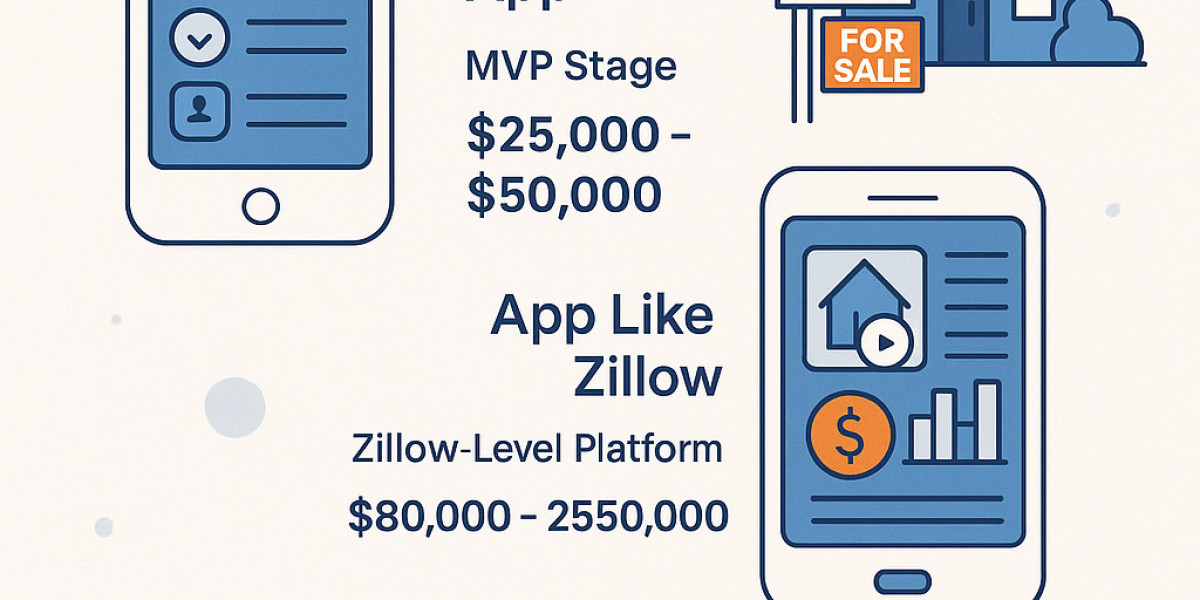The real estate market has shifted rapidly over the past few years, with buyers, renters, and investors relying on apps for everything from browsing listings to closing deals. As demand rises, startups and established companies alike are looking to build apps that meet modern user expectations.
One of the first questions founders ask before starting is simple: How much will it cost to build my app? The answer depends on the type of product you want to create. This guide breaks down the costs — from building a lean MVP to developing a feature-rich, Zillow-level platform — so you can plan your budget with clarity and confidence.
Why Understanding App Costs Matters
Budget planning isn’t just about knowing how much money you need; it’s about making informed decisions at every stage of development.
An accurate cost estimate allows founders to prioritize features, avoid overspending, and prevent delays caused by poor planning. Without this insight, projects can stall or balloon far beyond initial expectations. Understanding the financial side early sets a strong foundation for your app’s success.
The MVP Stage: Budget-Friendly Starting Point
A minimum viable product (MVP) is the most cost-effective way to test your idea in the market. It includes only the features needed to solve your users’ immediate problems and gather feedback for future iterations.
For real estate apps, this typically includes:
Property listings and basic search filters
User profiles and account management
Contact forms or direct inquiry features
How much does it cost to build a basic real estate app? Depending on design and functionality, MVP development can range between $25,000 and $50,000.
Working with a reliable real estate app development company at this stage helps founders stay focused on features that matter most while keeping expenses under control. A trusted partner also streamlines the process, reducing costly missteps.
Scaling to a Zillow-Level Platform
Once an MVP gains traction, the next step is scaling it into a robust platform with advanced features that compete with industry leaders like Zillow.
These apps go beyond basic property search and include:
Virtual property tours and 3D views
Mortgage calculators and financing tools
AI-driven recommendations for users
CRM integration for agents and brokers
Analytics dashboards for tracking performance
How much does it cost to build an app like Zillow? Development for a fully featured, Zillow-level platform can range from $80,000 to $250,000, depending on the scope, integrations, and overall complexity.
As features expand, so do timeframes and team requirements. Hiring skilled developers, designers, and product managers becomes essential to ensure the app runs smoothly and delivers value to users.
Factors Affecting Real Estate App Development Cost
Understanding the factors behind real estate app development cost helps you plan smarter and avoid surprises down the road. Several key elements influence the final budget, including:
Feature Complexity – A simple property search is cheaper than implementing AI-driven matchmaking or dynamic pricing models.
Design Requirements – Basic layouts cost less, while immersive UX with animations or 3D elements requires more resources.
Tech Stack Choices – Advanced backend infrastructure, third-party APIs, and cross-platform frameworks can impact cost.
Development Team Structure – In-house teams often cost more than outsourced or hybrid teams but may offer tighter collaboration.
Maintenance and Updates – Ongoing costs for bug fixes, feature enhancements, and security updates are often overlooked.
Understanding these variables helps you estimate real estate app development cost more accurately and make decisions that fit both your vision and budget.
Cost-Saving Tips Without Compromising Quality
Many founders wonder if they can reduce costs without hurting the final product. The answer is yes — with the right approach.
Here are some practical strategies:
Start small with an MVP before committing to large-scale features.
Use cross-platform frameworks to build for iOS and Android simultaneously.
Prioritize must-have features for launch, adding extras later as your user base grows.
Partner with experienced teams who understand real estate workflows and know how to build efficiently.
These steps not only keep your initial investment lean but also help you grow sustainably.
Conclusion
Building a real estate app isn’t just about having a great idea — it’s about turning that idea into a product that fits your budget and timeline.
Whether you’re starting with an MVP or aiming for a Zillow-level platform, understanding the financial landscape makes the journey smoother. Work with trusted partners, plan carefully, and keep your costs in check to set your app up for long-term success.
If you’re ready to explore options for your project, our team can help you map out a detailed development roadmap, balance costs with features, and create an app designed for growth.



